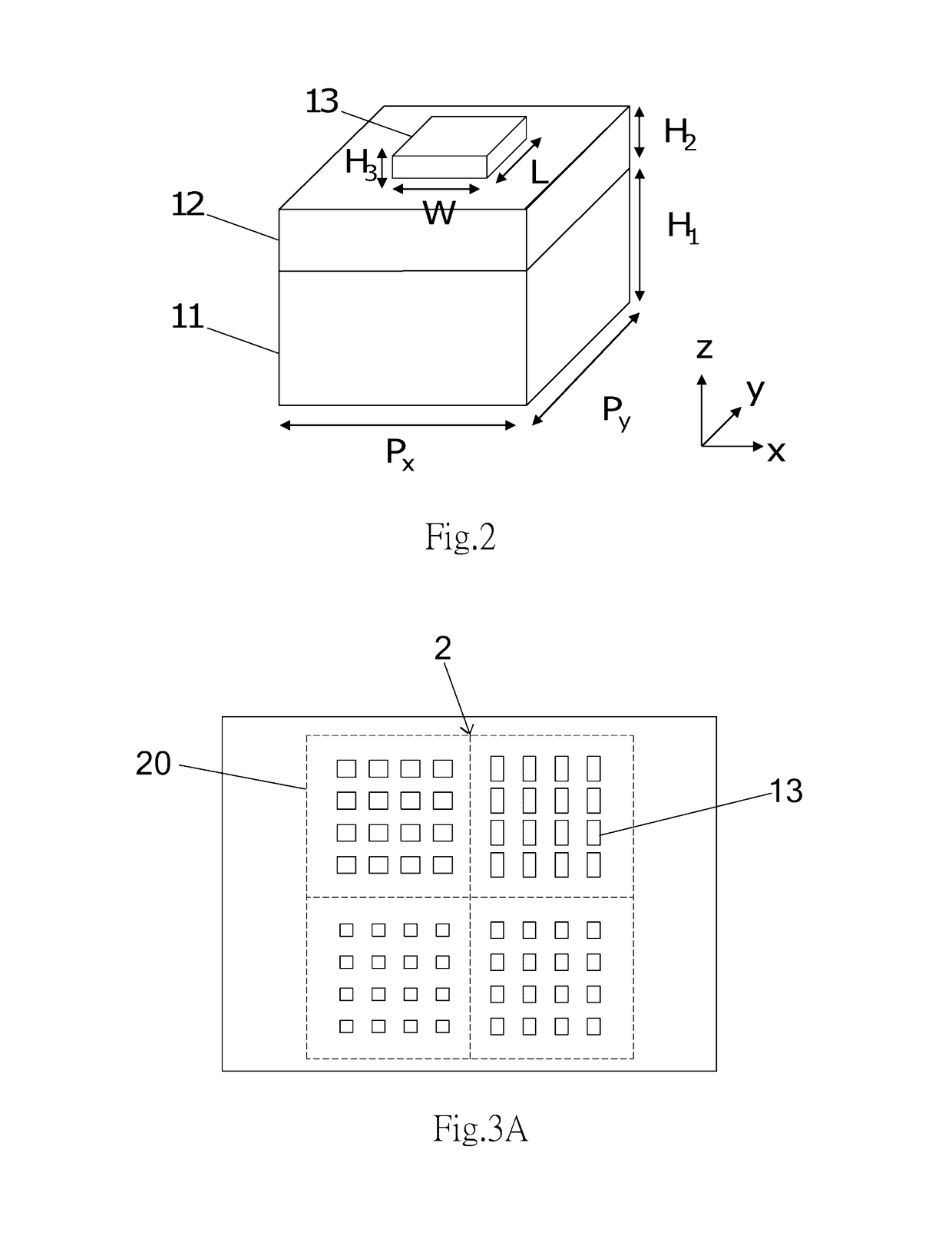Plasmonic multicolor meta-hologram
a plasmonic multi-color, phase-modulated technology, applied in the field of optical components, can solve the problems of not being able to achieve wavelength division multiplexing, not performing so well for resonances with other wavelengths, and not being able to display in three primary colors, etc., to achieve a wide operating wavelength range, shorten the spectrum, and increase the plasma resonance
- Summary
- Abstract
- Description
- Claims
- Application Information
AI Technical Summary
Benefits of technology
Problems solved by technology
Method used
Image
Examples
Embodiment Construction
[0020]The nanoscale optical component exemplified in the present invention is a type of metasurface. In general, such metasurface has a plurality of metal nanostructures periodically arranged thereon, and the design and arrangement of those metal nanostructures are mostly related to phase modulation for electromagnetic waves. When an incident electromagnetic wave arrives at the metasurface, the metal nanostructure thereof is then excited and a plasmon resonance occurs, which causes the metal nanostructure to further radiate an electromagnetic wave. Compared to the incident wave, the radiated electromagnetic wave from the excited metal nanostructure has been altered in intensity and phase and is propagating in accordance with the generalized Snell's Law.
[0021]Generalized Snell's Law
[0022]With reference to FIG. 1, as far as a metasurface is concerned, an artificial structure (such as the metal nanostructure according to the present invention) configured on an interface defined between...
PUM
 Login to View More
Login to View More Abstract
Description
Claims
Application Information
 Login to View More
Login to View More - R&D
- Intellectual Property
- Life Sciences
- Materials
- Tech Scout
- Unparalleled Data Quality
- Higher Quality Content
- 60% Fewer Hallucinations
Browse by: Latest US Patents, China's latest patents, Technical Efficacy Thesaurus, Application Domain, Technology Topic, Popular Technical Reports.
© 2025 PatSnap. All rights reserved.Legal|Privacy policy|Modern Slavery Act Transparency Statement|Sitemap|About US| Contact US: help@patsnap.com



